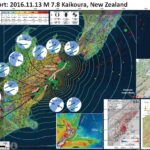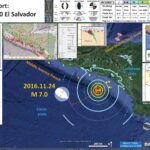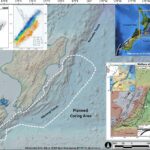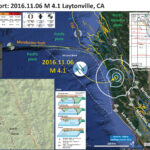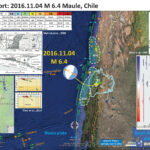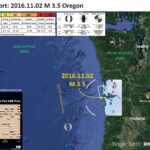This is the first of several posts about a complex earthquake series that happened along the northern end of the South Island in New Zealand. I was at sea on the R/V Tangaroa collecting piston cores offshore along the Hikurangi…
Earthquake Report: El Salvador!
While waiting to board my plane from Sydney (AU) to SFO, I put together an interpretive poster for the M 7.0 earthquake offshore of El Salvador from today. I will spend more time later adding more information, including some background…
Getting ready for the cruise!
2016.11.09 Getting ready for the cruise! My main research cruise blog page is here: http://humboldt-jay.blogspot.com. We will be heading to sea to search for submarine landslide deposits called turbidites. There are several ways that these landslides can be triggered. Earthquakes…
Earthquake Report: Laytonville (northern CA)!
This morning there was another earthquake in northern CA between the San Andreas (SAF) and Maacama faults (MF). This region has been active for the past few years, with earthquakes in the M 3-4 range. Most recently, there was a…
Earthquake Report: Maule, Chile!
This morning there was a moderate sized earthquake below the megathrust in Chile. Here is the USGS website for this M 6.4 earthquake. Based upon the hypocentral depth, this appears to be along the megathrust fault (an “interface” event). However,…
Earthquake Report: Laytonville, CA
Last night we had an earthquake between the Maacama faults and the San Andreas fault. This region has experienced several earthquakes recently, which makes me think that there may be an unmapped fault there (there is no hydrothermal or oil…
Earthquake Report: Oregon
We just had an earthquake with an epicenter that plots near Warrenton, Oregon (at the northwesternmost tip of Oregon, near the mouth of the Columbia River). Here is the USGS website for this M 3.5 earthquake. Even though it is…

